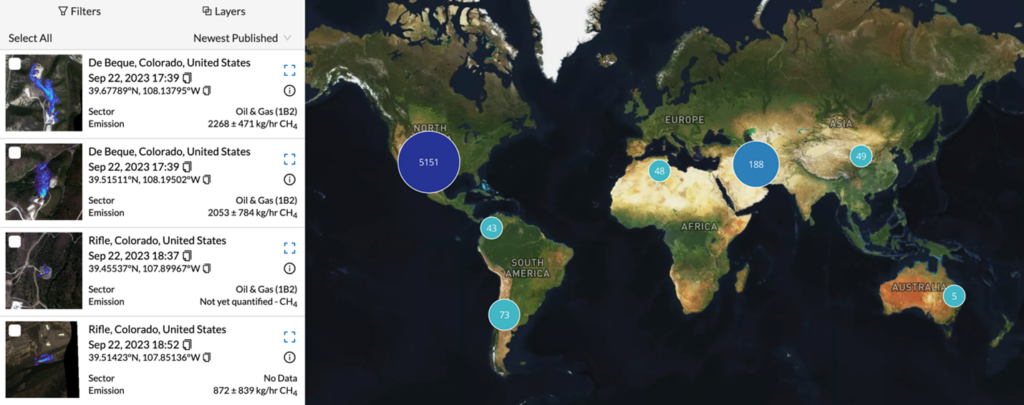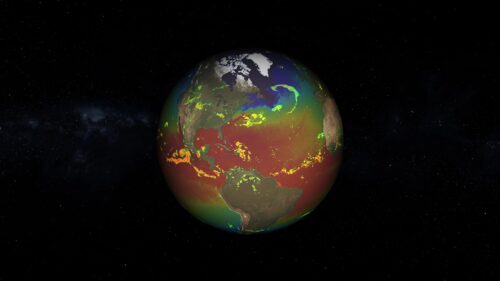
5 Facts to Know About Reducing Methane from Oil and Gas
Methane is a dangerous climate pollutant that, left unchecked, has the potential to drive far more warming than carbon dioxide in the near term. For the oil and gas sector, the top source of methane in the United States, cutting leakage is a rising imperative.
For a generation, climate action has focused mainly on carbon dioxide. Yet recently, methane has emerged as an increasingly urgent priority to measure and reduce.
To date, this invisible gas is responsible for 30 percent of the earth’s temperature rise since the Industrial era began, heating that is currently driving damage from flooding, wildfires, droughts, disease, and more destruction globally. And the threat is growing. Atmospheric concentrations of methane have accelerated at an unprecedented rate over the past century.
Exhibit 1. Atmospheric methane concentrations since the year 1010, parts per billion (ppb)
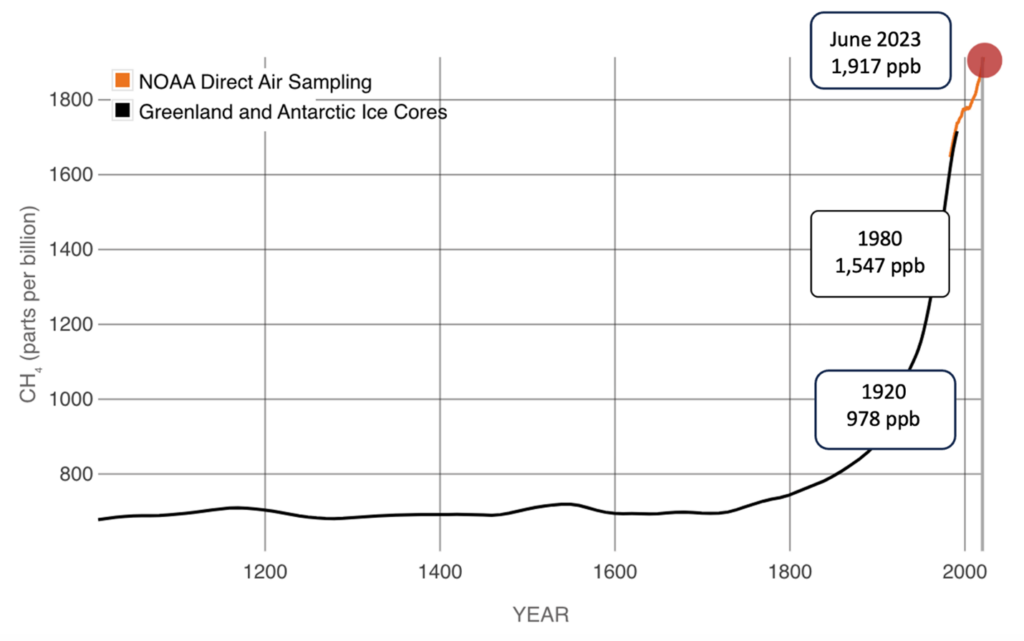
Sources: NASA and NOAA, 2021-2023, https://climate.nasa.gov/vital-signs/methane/ and https://gml.noaa.gov/ccgg/trends_ch4/
Oil and gas play an outsized role in the boom in methane emissions. The sector is the leading source of human-caused methane emissions globally after agriculture. From a global context, the best estimates of major sources include oil and gas (23 percent), coal (12 percent), rice cultivation (8 percent), livestock (32 percent), and landfills and wastewater (20 percent).
But the share of methane emissions can vary widely geographically. For example, livestock accounts for a similar share of methane emissions in the United States and China, whereas oil and gas are a major source of methane in the United States, but coal is a major source in China (Exhibit 2).
Exhibit 2. Methane sources in the United States and China, % of total
Here’s the good news. Since COP26 in 2021 there has been increased political will and commitment to tackle methane. With the flagship Global Methane Pledge coming alongside other domestic and international programs across multiple sectors. Meanwhile, remote sensing technologies (especially those with the capabilities to detect super-emitting oil and gas facilities) are making methane emissions more transparent and, therefore, actionable in new and exciting ways.
In the lead-up to COP28 and beyond, methane must continue to get urgent attention. The oil and gas sector is particularly ripe for immediate and substantial reductions. In this context, here are five things everyone needs to know as we push to slash methane emissions.
1. Methane has dangerous warming superpowers.
Compared to one ton of carbon dioxide, methane’s warming power amounts to over 80 tons of carbon dioxide equivalent (CO2e) emissions in a 20-year period. In other words, if CO2 places a single blanket warming the planet, methane piles on more than 80 blankets, overheating the planet right now. According to the Intergovernmental Panel on Climate Change (IPCC), of the Earth’s 1.1°C current temperature rise to date (gray bar), methane emissions have caused 0.5°C of warming (highlighted bar).
Exhibit 3. Methane’s role in observed warming from human activities
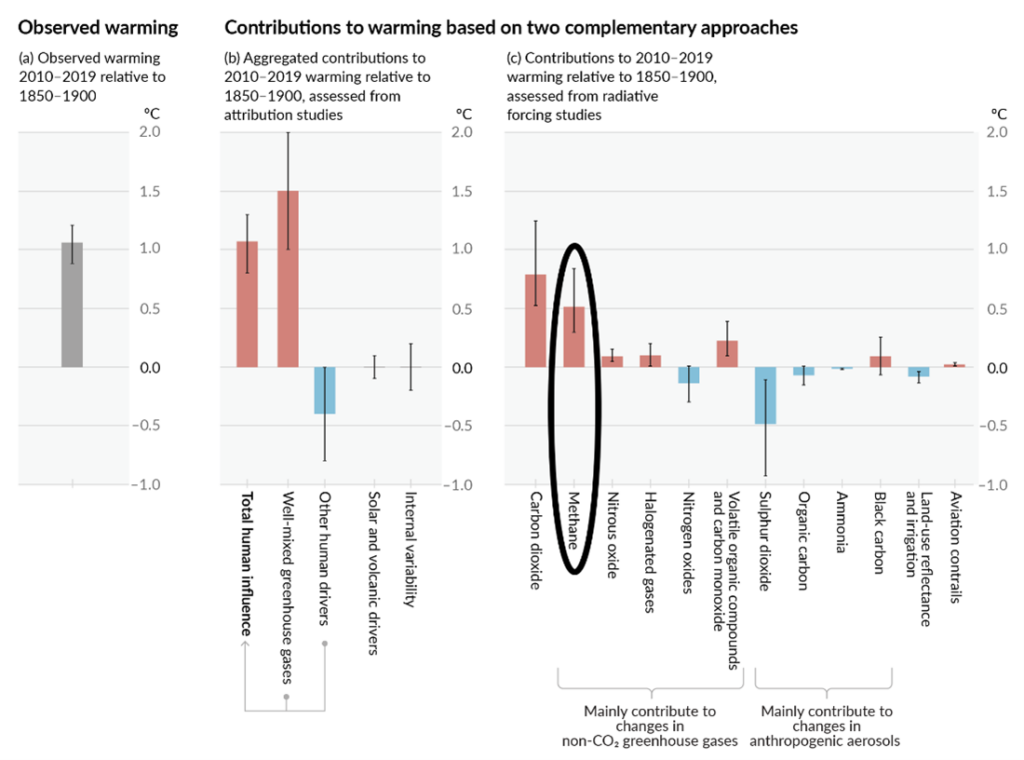
Source: IPCC, Sixth Annual Report, 2021, https://www.ipcc.ch/report/ar6/wg1/figures/summary-for-policymakers/figure-spm-2/
2. Leaky gas can damage the climate even more than coal in the near term.
Natural gas is made up of mostly methane. So if gas leaks, it cannot serve as a safe energy transition fuel due to methane’s warming superpowers. Studies find that as little as 0.2 percent gas leakage can put gas on par with coal’s net greenhouse gas emissions forcing near-term warming. Empirical studies measure wide-ranging gas leakage rates from 0.6 to 66 percent (the latter from offshore platforms in state waters in the US Gulf of Mexico). And comparing US gas to oil using the International Energy Agency’s (IEA) Methane Tracker, methane leakage tips the scales to gas posing greater climate damage in the short term.
Exhibit 4. US oil and gas industry estimated greenhouse gas emissions in 2021
3. Plugging methane leaks is cost effective.
Gas leaks are found throughout oil and gas operations, including from well heads, pumps, tanks, pipelines, compressors, and flares. Regardless of where it comes from, leaked methane translates directly to lost product. Many leaks can be repaired with existing cost-effective and technically available improvements. Detecting and stopping leakage both makes gas company operations more efficient — and delivers major climate and public health benefits.
Exhibit 5. Oil and gas methane abatement cost curve, at 2017-2021 gas prices
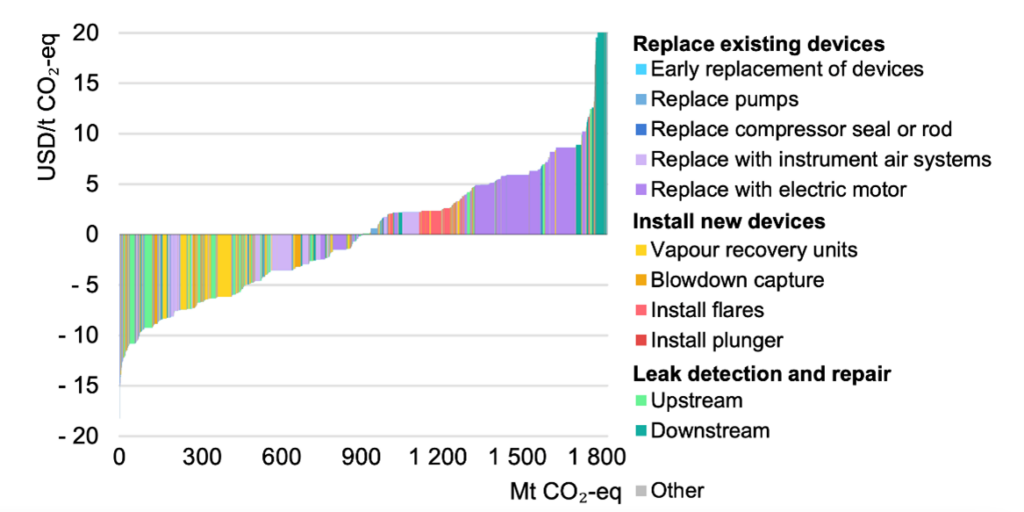
Source: International Energy Agency, May 2023, https://www.iea.org/reports/emissions-from-oil-and-gas-operations-in-net-zero-transitions
Note: Income from gas sales based on 2017–21 average gas prices. Note: marginal abatement cost curve shifts to the right using 2022 gas prices so that over three-quarters of methane mitigation measures are cost effective.
4. Many companies are not rushing to stop leaking gas.
Even though plugging leaks is low cost (or even profitable), many companies are not moving quickly enough to stop leaking gas from being emitted into the atmosphere. While this is a global problem, the United States — and especially Texas’s Permian Basin — has an outsized amount of methane leakage from oil and gas systems. Moves are afoot for companies to voluntarily certify their gas as low leakage. But mandatory requirements are called for if the entire industry is to follow suit. Policies like the Inflation Reduction Act are a positive step forward, but more action is needed both in the United States and abroad.
Exhibit 6. Observed methane emissions sources by country
Source: Carbon Mapper, https://data.carbonmapper.org/?sort=emissions_desc#1.15/25/0
Notes: The numbers in the bubbles represent the total count of super-emitting methane sources currently detected in that country. The table to the left is sorted by largest global methane emissions and shows US oil and gas sources with some of the highest methane levels detected.
5. Methane aerial detection is multiplying rapidly.
Aerial detection, especially satellites, plays an important role in preventing and mitigating methane releases. Expanding detection and putting this data into the hands of operators, investors, regulators, and civil societies is the surest way to address methane leakage worldwide.
Operators use methane detection to repair broken equipment and stem routine leakage. Investors factor all facets of methane emissions data into financial decisions and mitigation strategies. Regulators depend on the near real time emissions detection that satellites to enforce standards and assign fees. And civil society groups have a lot to gain from greater transparency on methane emissions because NGOs can foster broad involvement across a broad group of stakeholders.
Exhibit 7. US methane leaks detected via aerial methods
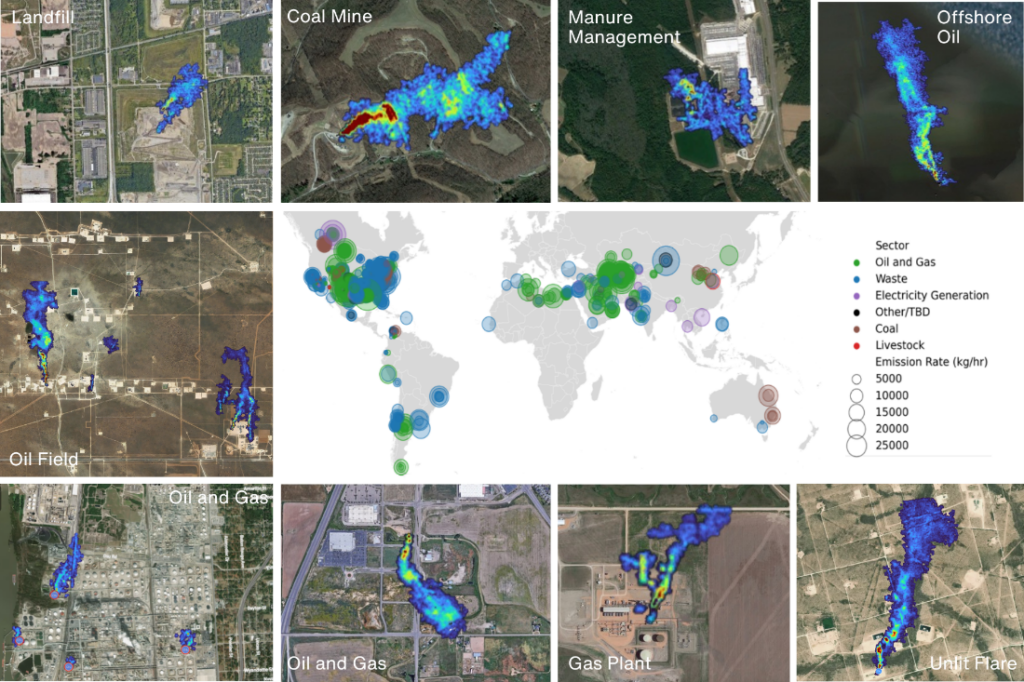
Source: Carbon Mapper, https://carbonmapper.org/
An array of different technical and policy tools are at the fore to slash methane emissions now. Models and remote sensing heighten the visibility that can drive methane mitigation on several fronts, including activating emissions-differentiated markets, shaping government policy and regulation, guiding corporate business decisions, allocating investor portfolios, and informing citizens.
Providing climate intelligence to a combination of stakeholders can induce oil and gas operators to prevent both routine and non-routine methane emissions systemwide.
